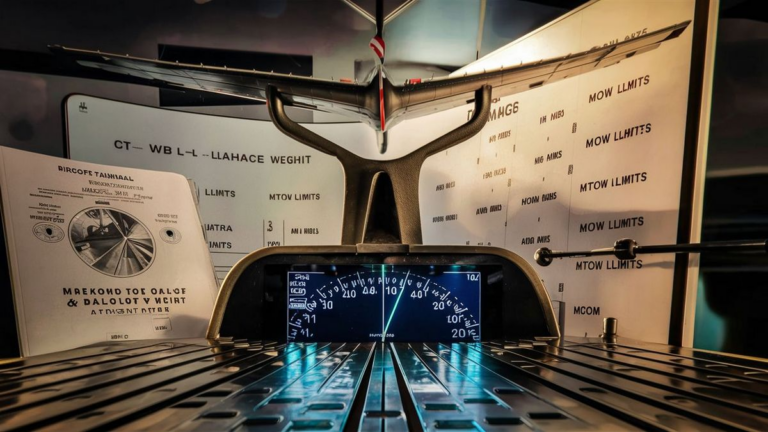MTOW, or Maximum Takeoff Weight, is a critical parameter in the aviation industry, governing the safe operation of aircraft during takeoff. It refers to the maximum weight at which an aircraft is certified to take off, including the aircraft’s own weight, fuel, passengers, cargo, and any other relevant items. Understanding MTOW is fundamental for pilots, engineers, and aviation enthusiasts alike.
Importance of MTOW
MTOW plays a pivotal role in ensuring flight safety. Exceeding MTOW during takeoff can lead to a variety of hazardous situations, including compromised performance, reduced maneuverability, and even catastrophic accidents. Therefore, adhering to MTOW limits is crucial for maintaining safe flight operations.
Factors Influencing MTOW
Several factors influence an aircraft’s MTOW:
- Structural Integrity: The aircraft’s design and construction must be capable of handling the stresses imposed by the maximum takeoff weight.
- Engine Power: The engines must generate sufficient thrust to lift the aircraft off the ground at its maximum weight.
- Runway Length and Elevation: Longer runways and lower elevations allow aircraft to achieve higher takeoff weights.
- Environmental Conditions: Temperature, humidity, and wind affect an aircraft’s performance during takeoff, influencing its maximum allowable weight.
Regulatory Compliance
MTOW values are not arbitrary; they are determined through rigorous testing and certification processes mandated by aviation regulatory authorities such as the Federal Aviation Administration (FAA) in the United States or the European Union Aviation Safety Agency (EASA) in Europe. These agencies set strict standards to ensure the safety of aircraft operations.
Operating Within MTOW Limits
Pilots and operators must adhere to MTOW limits specified in the aircraft’s flight manual or other official documentation. Failure to do so can result in regulatory violations, operational disruptions, and increased safety risks.
Implications of Exceeding MTOW
Exceeding MTOW can have serious consequences, including:
- Reduced Performance: Aircraft may struggle to climb, maintain altitude, or accelerate properly.
- Increased Stopping Distance: Heavier aircraft require longer runways for takeoff and landing, posing challenges during emergencies.
- Structural Damage: Excessive weight can damage the aircraft’s structure, compromising its airworthiness.
Understanding MTOW is paramount for safe and efficient aircraft operations. Pilots, engineers, and aviation stakeholders must recognize the significance of adhering to MTOW limits to ensure the safety of passengers, crew, and aircraft. By prioritizing compliance with MTOW regulations, the aviation industry can uphold its commitment to safety and professionalism.
Calculating MTOW
MTOW is calculated based on a variety of factors, including the aircraft’s design, intended use, and regulatory requirements. Engineers use complex algorithms and simulations to determine the maximum weight that the aircraft can safely handle during takeoff.
Design Considerations
During the design phase, engineers must balance factors such as structural strength, aerodynamics, and fuel efficiency to optimize the aircraft’s performance within MTOW limits. This involves extensive testing and analysis to ensure that the aircraft can safely operate under a range of conditions.
Flight Planning
Pilots and flight planners must carefully consider MTOW when creating flight plans. Factors such as route distance, weather conditions, and payload weight all influence the aircraft’s ability to safely take off and reach its destination. By accurately calculating MTOW, pilots can make informed decisions to ensure the safety and efficiency of each flight.
Frequently Asked Questions
| Question | Answer |
|---|---|
| Can MTOW change for an aircraft? | MTOW can sometimes be adjusted for specific circumstances, such as operating on shorter runways or in colder temperatures. However, any changes to MTOW must be approved by aviation regulatory authorities and carefully documented to ensure safety. |
| How does MTOW affect fuel consumption? | MTOW directly impacts fuel consumption, as heavier aircraft require more fuel to achieve and maintain flight. Pilots and operators must consider MTOW when planning fuel loads to ensure that the aircraft can safely complete its journey without exceeding weight limits. |
| What happens if an aircraft exceeds MTOW during flight? | Exceeding MTOW during flight is extremely dangerous and can lead to loss of control, structural damage, or even catastrophic failure. Pilots and operators must strictly adhere to MTOW limits to prevent such incidents. |






